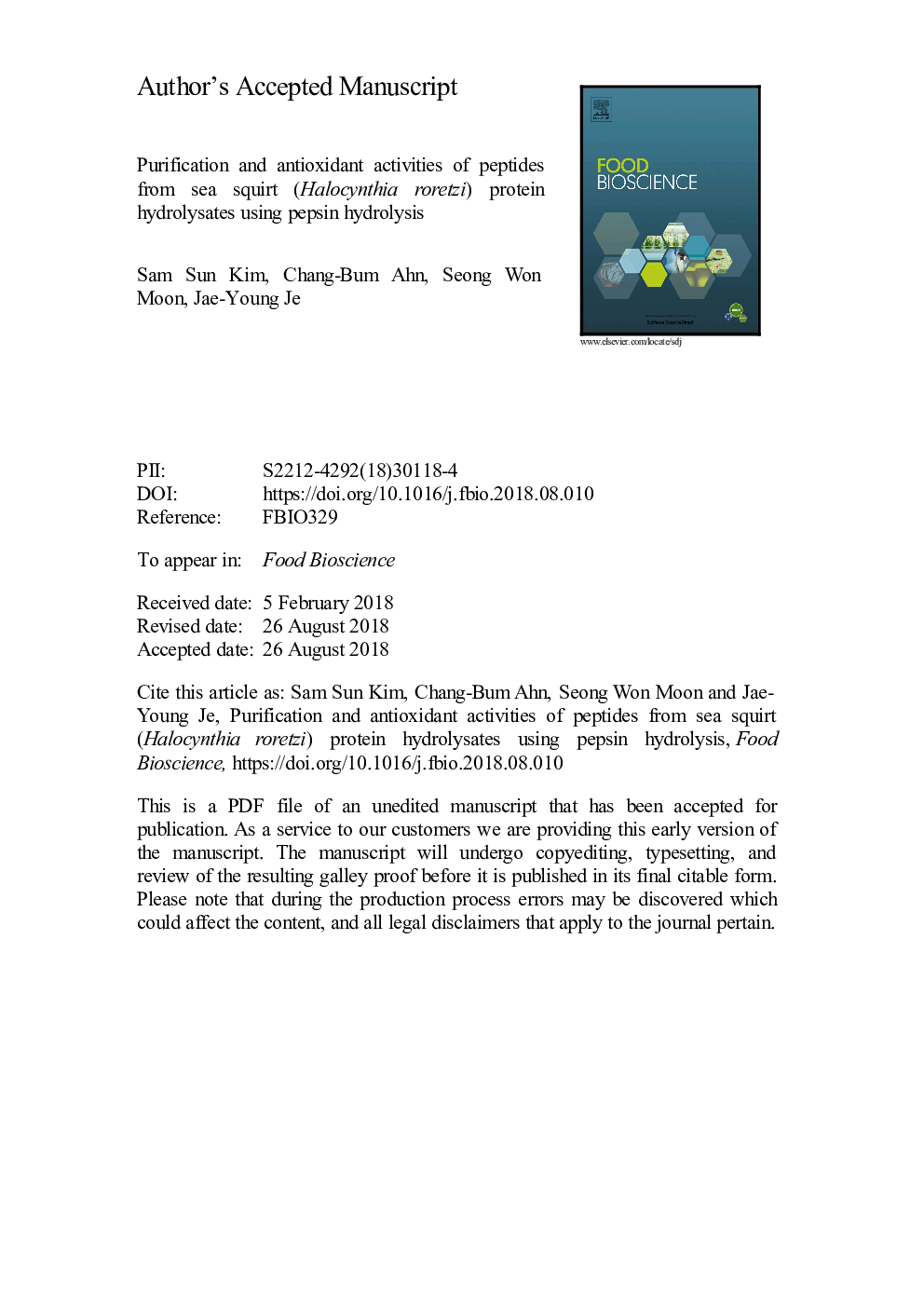| Article ID | Journal | Published Year | Pages | File Type |
|---|---|---|---|---|
| 10999811 | Food Bioscience | 2018 | 23 Pages |
Abstract
Sea squirt (Halocynthia roretzi) are widely used as a food material in Korea. Sea squirt protein (SSP) were isolated by alkaline solubilization followed by acidic precipitation. SSP were further hydrolyzed using pepsin hydrolysis at pH 2 for 2â¯h to release antioxidant peptides. SSP hydrolysates (SSPH) showed DPPH radical scavenging activity of 31â¯Â±â¯1% at 1â¯mg/mL, ORAC of 576â¯Â±â¯1â¯Î¼M trolox equivalent (TE)/mg SSPH, and ABTS+ radical scavenging activity of 38â¯Â±â¯1â¯Î¼M TE/mg SSPH. Three antioxidant peptides LEW, MTTL, and YYPYQL were purified and identified from SSPH using chromatography and tandem mass spectrometry (LC-MS/MS). The antioxidant activities of LEW, MTTL, and YYPYQL were evaluated using DPPH and ABTS+ radical scavenging activity, Fe2+ chelating activity, ORAC, and reducing power. Among the three peptides, LEW showed the highest DPPH radical scavenging activity of 75% at 5â¯mM. The ORAC value of LEW (77.1â¯Î¼M TE/50â¯Î¼M LEW) and YYPYQL (84.6â¯Î¼M TE/50â¯Î¼M YYPYQL) are higher than glutathione (18.5â¯Î¼M TE/50â¯Î¼M GSH), as a positive control. The three antioxidant peptides showed higher Fe2+ chelating activity than GSH, but ABTS+ radical scavenging activity and reducing power of LEW, MTTL, and YYPYQL were lower than GSH. Taken together, these results suggest that SSPH and/or the purified antioxidant peptides may be useful as a functional food additive.
Related Topics
Physical Sciences and Engineering
Chemical Engineering
Bioengineering
Authors
Sam Sun Kim, Chang-Bum Ahn, Seong Won Moon, Jae-Young Je,
